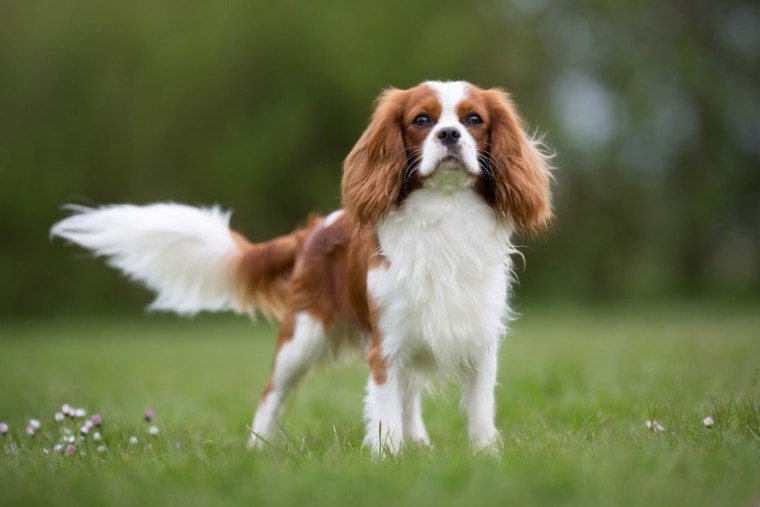
Click Below to Skip Ahead
The Cavalier King Charles Spaniel is a close relative to other Spaniel breeds and is therefore quite similar in temperament and appearance. This breed didn’t diverge from the King Charles Spaniel until around 1926, so they are considered a newer dog breed. They are a smaller breed of Spaniel, only weighing a maximum of 28 pounds. They originated in the U.K. but have slowly gained popularity in the United States since the turn of the century. They are currently the 19th popular dog breed, which is remarkable considering that they are only around a hundred years old.
Breed Overview
Height:
12 – 13 inches
Weight:
13 – 18 pounds
Lifespan:
9 – 14 years
Colors:
Tricolor, “Blenheim,” Black and tan, ruby
Suitable for:
Families of all sorts
Temperament:
Affectionate, patient, people-oriented
These dogs are well-known for their gentle and friendly nature. They are people-oriented and require regular interaction with their family to be happy. This Spaniel doesn’t do well with being left home alone for much of the day. They are great with all people, though, including strangers and children.
Cavalier King Charles Spaniel Characteristics
Cavalier King Charles Spaniel Puppies
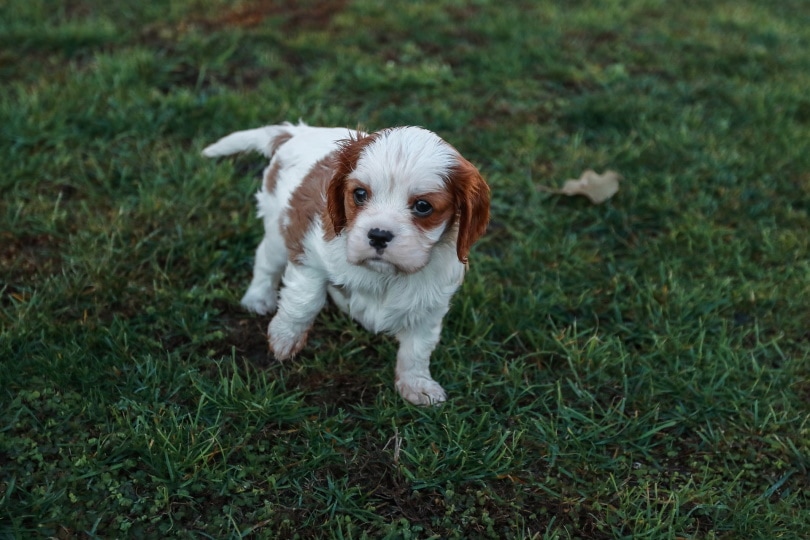
Due to their popularity, it is not difficult to find a breeder specializing in these puppies in the United States or throughout much of Europe.
Selecting a qualified breeder is important if you want a healthy and well-behaved puppy. While the Cavalier King Charles Spaniel is known for being well-mannered, this only applies to well-bred puppies. It is often best to compromise on certain aspects of the puppy, like the sex and color, in order to receive a higher quality dog.
The Cavalier King Charles Spaniel makes a wonderful family dog. They are affectionate dogs and very patient, making them a great choice of pup to grow up alongside kids.
Temperament & Intelligence of the Cavalier King Charles Spaniel
This breed is often advertised as the perfect family dog. They are known for being affectionate with their owners and just about everyone else. They are extremely eager to please and patient, which makes them a good choice for new owners and seniors. They don’t require much work on their owner’s part, though they do need regular interaction with people to remain happy. Otherwise, they may quickly become lonely and destructive.
Many are prone to isolation anxiety. This is different from separation anxiety in that the dog isn’t worried about being away from a particular person, just being alone in general. Therefore, it is important to get the dog used to alone time at a young age. However, it is important to understand that this isn’t a breed that you can leave alone all day, even after crate training.
This breed is adaptable. They can live in the country or in an apartment. They are perfectly content in a home with a senior or with plenty of children. Their adaptability is one reason that they make such good companion dogs.
These dogs can be playful but they aren’t exactly energetic. They often have the playfulness of a puppy when young and will usually accept playtime when offered. However, they do not need huge amounts of exercise and are not hyperactive like some other breeds. They are often happy sleeping on the couch all day or going hiking. They aren’t picky!
They have a high prey drive, though, and will chase just about anything. They are known to chase things into busy streets and get injured, so they should never be allowed to wander. They are not “street-wise” dogs.
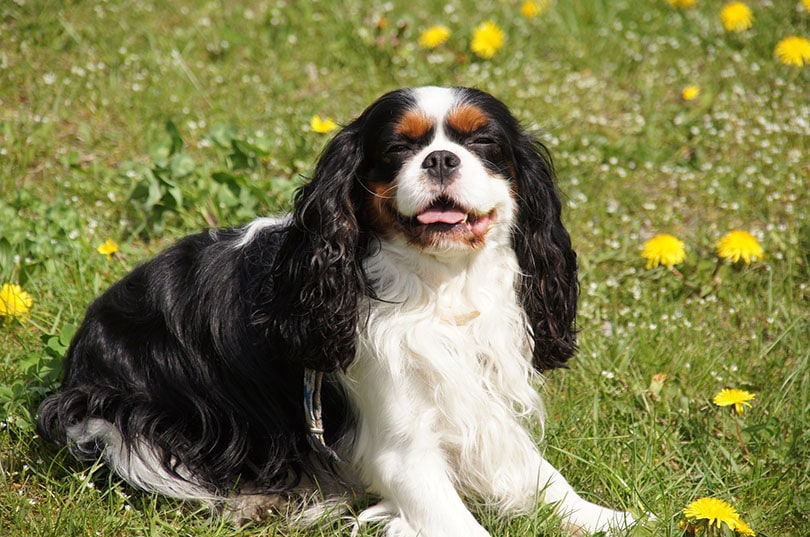
Are These Dogs Good for Families? 👪
The Cavalier King Charles Spaniel is known as being one of the best companion dogs around. They can fit effortlessly into families of all sorts. They are gentle and patient with children, which allows them to generally get along in most families. However, it is important that the children are supervised. Since they are smaller dogs, this breed can get injured by a hyperactive toddler. They generally won’t retaliate, but it is still unfair to allow a child to potentially injure them.
These dogs are relatively adaptable to all types of families. They are fine with someone living alone or with families with multiple children. They are suitable for quiet and noisy households alike. They’re laidback and easygoing.
That said, they are people-oriented and need someone to be with them for much of the day. They are not a great pet for those who are going to be gone much of the time, as they need human interaction to remain happy. Crate training can help them accept being alone for an hour or two, but they will never adapt to being alone all day.
Therefore, they are best for families that have someone at home for much of the day.
Does This Breed Get Along With Other Pets?
This breed socializes easily with other dogs of all sorts. Despite their smaller size, they are not fearful of larger dogs and will happily play with them despite the size difference. They are not territorial in the least, so they work well in homes with multiple canines.
That said, socialization is still recommended. However, it is mostly the other dog’s temperament that you have to worry about, especially since the Cavalier King Charles Spaniel is smaller. Their fearlessness of larger dogs can sometimes get them in trouble.
They do have a prey drive, so they often aren’t best for homes with cats. But some owners report that their Cavalier King Charles Spaniel does get along somewhat well with their cat. It seems that early socialization and training can temper their hunting instincts and make them more accepting of other animals.
Things to Know When Owning a Cavalier King Charles Spaniel
Food & Diet Requirements 🦴
Because they are small, these dogs generally don’t eat much. This makes it more affordable to feed them a high-quality diet, which we recommend. These dogs aren’t the healthiest, so they generally need all the help that they can get. We recommend high-quality food that is full of protein. You don’t necessarily need one specifically designed for this breed or even for small dogs, as the Cavalier King Charles Spaniel does perfectly fine with a normal dog diet.
These dogs are somewhat prone to obesity because they don’t exercise much and they love food. It is important to keep an eye on their body condition to ensure that they don’t start gaining weight. This can lead to all sorts of health conditions and shorten the dog’s lifespan considerably.
Preferably, you should be able to feel their ribs with some ease but not see more than a couple sets. If pockets of fat start developing between the ribs, your dog is overweight.
These dogs may be somewhat prone to allergies, which can be a serious problem in some cases. You should switch their food around often to avoid overexposure to one specific protein. We recommend switching between different high-quality brands, as companies tend to have their own “base” formula. This makes it difficult to promote a diverse diet within the same brand.
Exercise 🐕
These dogs are often described as having adaptable exercise needs. They often do not need high amounts of exercise to remain healthy and happy. They are often perfectly fine lying on the couch for much of the day. They often won’t get destructive or antsy.
At the same time, they are also capable of being a regular exercise partner. They don’t mind long walks, as long as they have been conditioned to that point.
In other words, these dogs are perfectly fine being as active as their humans. If you like to go for hikes, this dog can come with you. If you like cuddling on the couch, this dog will do that too. They are great for larger families with different people of varying activity levels, as this dog can do it all. They can run around with a school-aged child for hours and then curl up with a teenager while they do homework.
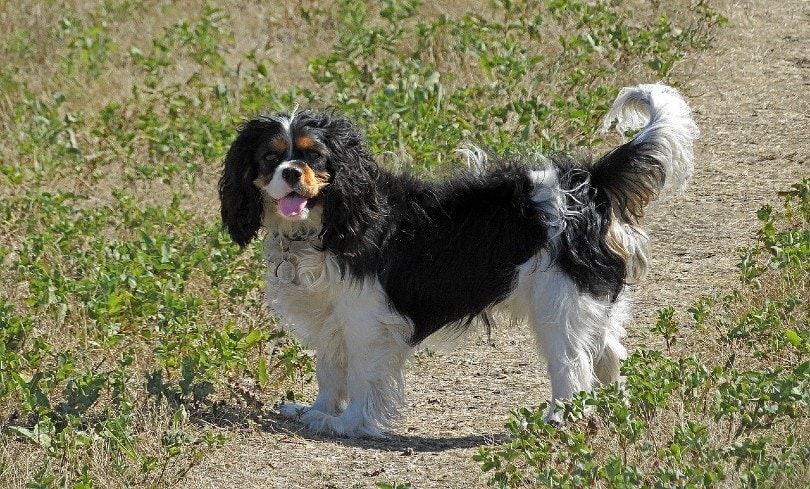
Training 🎾
These dogs have average intelligence. They aren’t the smartest breed in the world, but they are more than capable of learning most commands. They can even be used as therapy dogs due to their well-mannered nature. They usually act fine indoors, so they may not need as much training as you might think. However, they should still learn basic commands, like “stay” and “sit,” for safety purposes.
They are eager to please and will happily listen to just about any command that their owner gives them. They are not stubborn in the least. They can excel at a variety of canine sports, including obedience and agility. They simply love people and want to be loved back.
They will not learn commands as quickly as some other breeds will, though, so patience is required. Often, it isn’t that they aren’t listening, but rather that they don’t quite understand what you want.
These dogs are more than capable of being trained at home if you’ve ever trained a dog before. If you haven’t, we do recommend classes to help you understand the most efficient way to train them. It is more for your benefit than that of your dog.
While these dogs are friendly and obedient, socialization is still required. Like all breeds, if they don’t have many interacts with other dogs, they may become scared and aggressive upon meeting one. The same can be said for strange people. Introducing them to many different people at a young age is important to counteract any unsure feelings that these dogs may have. Puppy training classes are often highly recommended because they provide easy socialization in a safe environment.
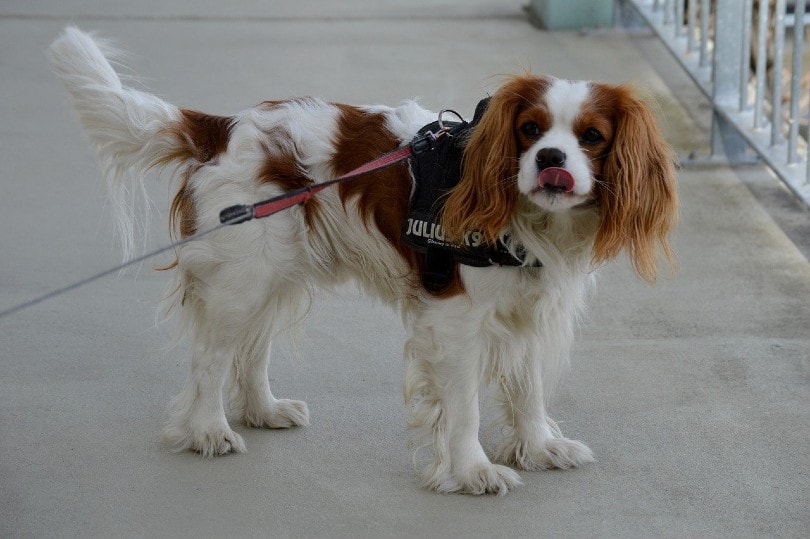
Grooming ✂️
Despite their luxurious coat, these dogs do not require much grooming in the least. They should be brushed out once a week to help keep their coat clean and spread out their natural oils. These oils can protect their skin and coat and promote hair growth. As long as you keep up with this regular brushing routine, you don’t have to worry about doing much grooming.
These dogs may occasionally need a bath if they get particularly dirty. However, they do not need to take a bath regularly. This can actually harm their coat by stripping it of natural oils, causing skin dryness and irritation. We do not recommend bathing these dogs unless they get muddy. Regular brushing should help them stay clean.
You should check their ears weekly for built-up dirt and wax. Their floppy ears have a tendency to trap debris, which can lead to ear infections. If you notice that their ears are dirty, you should clean them gently with a damp cotton ball. Stay on the lookout for ear infections as well, which will require veterinary attention.
Like most dogs, their nails will need to be trimmed regularly. Overgrown nails can be tough to walk on and are more prone to splitting. You can trim their nails at home or visit a groomer if you’re uncomfortable. Many groomers provide relatively cheap, quick appointments for nail trimmings only. Often, you don’t need to drop your dog off at these appointments. Some may even accept walk-ins for nail trimmings.
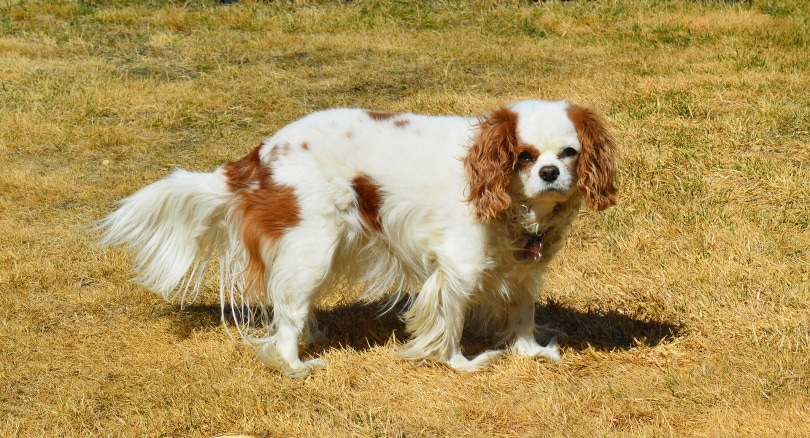
Health and Conditions 🏥
The Cavalier King Charles Spaniel is prone to quite a few health problems. They aren’t the unhealthiest breed out there, but they aren’t the healthiest either. All dogs should undergo health testing before they are bred to avoid passing down common genetic conditions. This is one reason that it is so important to get your dog from a breeder. Otherwise, you may end up with a sickly puppy.
Generally, these dogs are most prone to mitral valve disease, syringomyelia, and various eye conditions. Most breeders are part of a breed club or registered with the AKC, which requires them to get their dogs health tested for these conditions. Dogs found to be carrying them are not bred, which reduces the prevalence of disease in the breed.
However, health testing can only be so effective. Both mitral valve disease and syringomyelia are late-onset. They may not appear until the dog is already being used for breeding. Therefore, litters of affected puppies may have already been produced. Breeders must also rely on the dog’s pedigree and family tree when determining if they may be at risk for these conditions.
Syringomyelia is a condition that affects the spinal cord and brain, causing symptoms ranging from mild discomfort to partial paralysis. It is caused by a deformation in the skull, which limits the amount of room the brain has. This is an extremely common deformation, with the prevalence as high as 90% in Cavalier King Charles Spaniels, though only 30% to 70% end up with symptoms.
Mitral valve disease affects the heart and causes heart murmurs, which can eventually progress to heart failure. Many dogs in this breed have this condition, and in fact, it is the leading cause of death. This condition typically shows itself by the time that the dog is five, but younger dogs can have symptoms as well. This condition can even occur in dogs 1-2 years old.
These dogs may also be prone to hip dysplasia and elbow dysplasia, which some breeders test for. However, these are less common in this breed than in others. Environmental factors also play a large role. For instance, overfeeding a puppy can increase the likelihood of hip dysplasia. Therefore, many dogs with this condition may only have minor genetic predispositions, but their condition was set off by environmental factors.
Hearing testing is recommended by the American Cavalier King Charles Spaniel Club, though auditory issues are not a huge problem with this breed. In any case, this sort of testing is noninvasive and can often be done as early as 6 weeks. Some breeders test all their puppies before allowing them to be adopted out. This prevents customers from unknowingly adopting deaf puppies.
Male vs. Female
There are practically no differences between the sexes of this breed. Neither is particularly larger than the other. Males are not prone to more behavioral problems or more likely to be territorial. Both sexes have the same general appearance and temperament.
Therefore, the sex that you choose is largely up to your personal preference. Female dogs tend to be a bit more sought after than males, which can make the price of female dogs a bit higher. If you don’t have a preference, we recommend letting the breeder know so they can provide you with the first available puppy. Otherwise, you may be waiting for a while.
- You may also be interested in: Male vs. Female Cavalier King Charles Spaniels: What’s the Difference?
3 Little-Known Facts About the Cavalier King Charles Spaniel
1. This breed almost went extinct many times.
This breed has had a rocky history. First, they almost went extinct after the fall of the house of Stuart, when it became unfashionable to be associated with King Charles. The second World War also had a serious effect on this breed. They went from having a sizeable breeding population to few individuals due to food and supply shortages. No one could afford to feed a giant kennel of dogs during a war.
2. The Cavalier King Charles Spaniel is new to the dog world.
They weren’t recognized by the AKC until 1995. They were around for a short period before this, but their history generally doesn’t start until 1926. This makes them a relatively new breed, though they do descend from ancient Spaniels.
3. They were created in an attempt to revive the original King Charles Spaniel.
The Cavalier King Charles Spaniel was originally an attempt to return to the original King Charles Spaniel, which had largely disappeared due to improper breeding. Once it came back into circulation due to Queen Victoria, some breeders sought to re-make the older breed. Eventually, this caused the original breed to split in two, giving us both the Cavalier King Charles Spaniel and the regular King Charles Spaniel today.
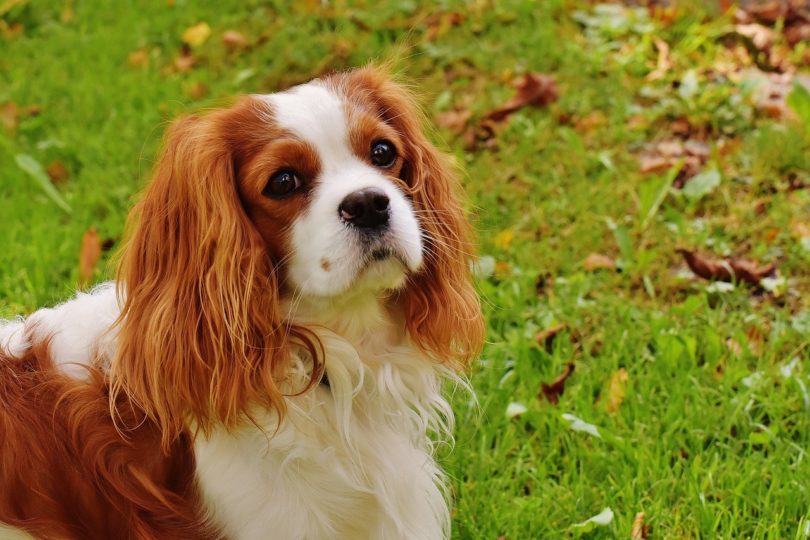
Final Thoughts
The Cavalier King Charles Spaniel is often considered one of the best family dogs. They get along with just about everyone and are friendly. Their adaptable nature makes them able to fit into most families with ease, whether you live in the country or a city apartment. They don’t require much care beyond regular attention. Their grooming needs don’t go beyond occasional brushing, and they don’t need tons of exercise.
However, this breed is a bit unhealthy. Most dogs will have an underlying condition of some sort, especially if they are not bred carefully. They can also be quite expensive, and their demand means that you may be waiting a while for a puppy. It is often not possible to choose a puppy with a specific coat pattern and sex.
In the end, these dogs make great companions. You should plan on paying extra for a puppy and for the vet bills later, however. Emergency medical funds are absolutely required for this breed.
Related Reads and Breeds:
- Cavalier King Charles Spaniel Names
- Cavalier King Charles Spaniel Mixes
- French Spaniel: Complete Guide, Info, Pictures, Care & More!
- 12 Fascinating Cavalier King Charles Spaniel Facts
Featured Image Credit: BIGANDT.COM, Shutterstock







